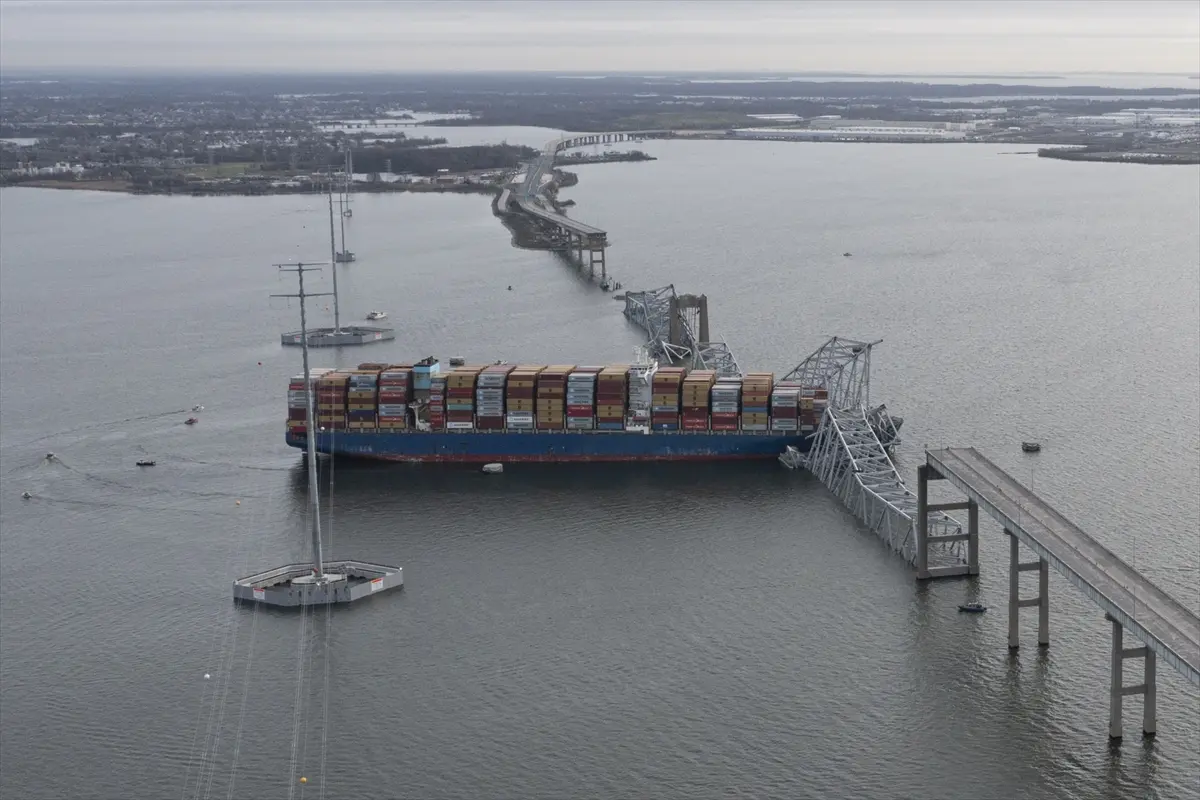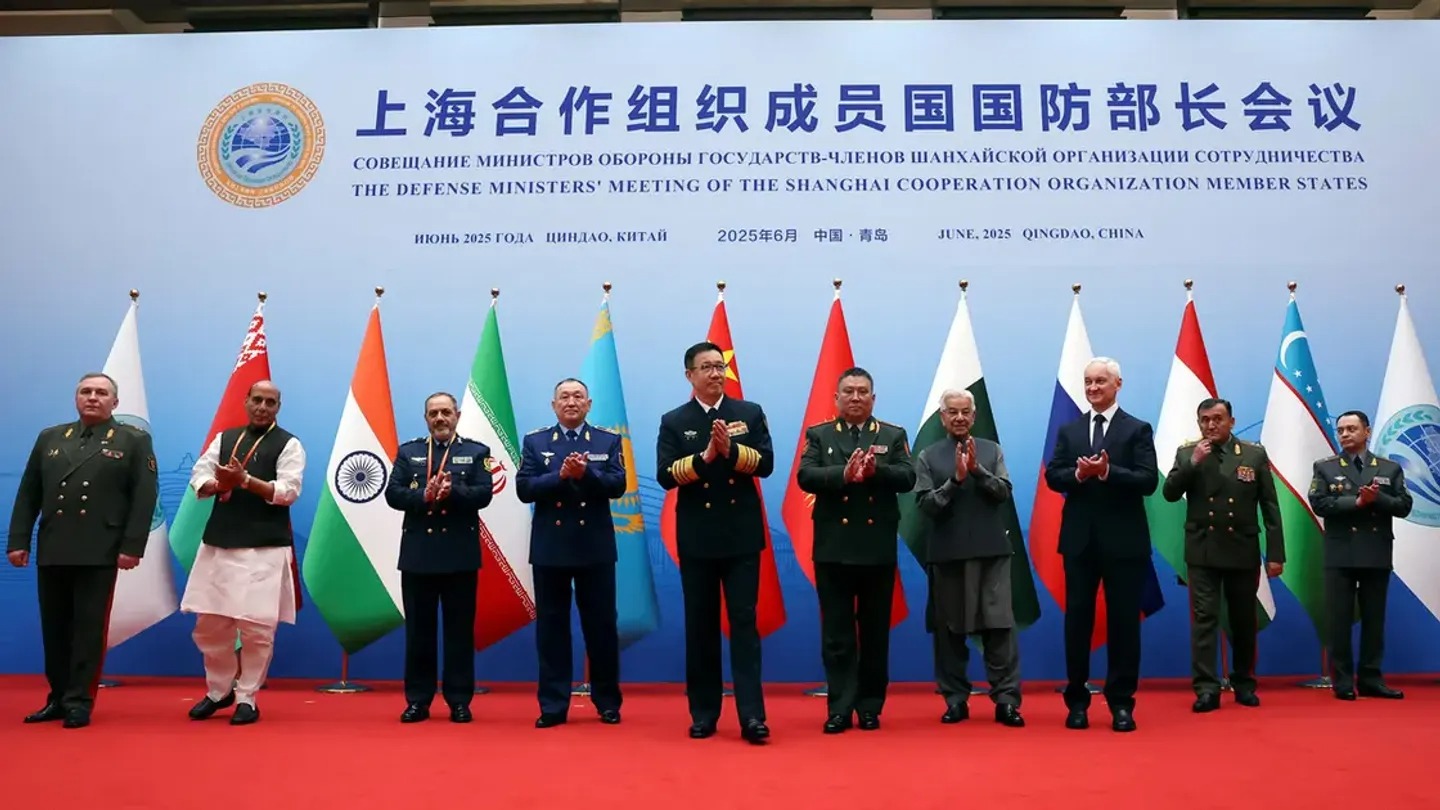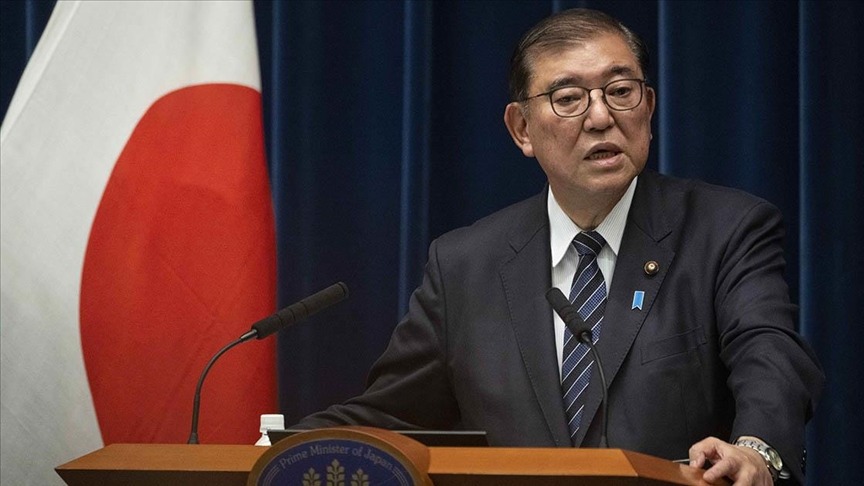Asia
Singapore starts dual probes of Baltimore bridge collapse

Singapore will launch a dual investigation into the Baltimore bridge collapse, in which a ship flying the city-state’s flag collided with an overpass in the US state of Maryland. Six construction workers are believed to have died in the accident.
The Maritime and Port Authority of Singapore said late on Wednesday that it would conduct an investigation to determine whether any rules under the country’s laws were violated because the ship Dali, which collided with the Francis Scott Key Bridge in Baltimore, was registered in Singapore.
As the administrator of Singapore-registered ships, the agency ensures that ships comply with international and national rules and regulations relating to maritime safety and security, protection of the marine environment, and social, living and working conditions on board.
Late on Wednesday, it was added that Singapore’s Transport Safety Investigation Bureau will conduct a separate investigation to draw lessons to prevent future maritime accidents and incidents. The bureau operates under the country’s Ministry of Transport.
“As a flag state, our officials will work closely with the US Coast Guard and its agencies to fully support the investigation,” Singapore’s Minister for Transport Chee Hong Tat said in a post on his Facebook page on Wednesday, adding: “My thoughts are with the people of Baltimore at this difficult time.”
The ship, the Dali, lost power as it left the port early on Tuesday and crashed into a bridge in Baltimore, sending vehicles and people into the river. The accident shut down the port of Baltimore, one of the busiest on the US east coast. Six people were reported missing following the incident.
The vessel is owned by Singapore-based Grace Ocean and operated by Synergy Marine, another company based in the city-state.
Synergy said the ship hit one of the bridge’s pillars, causing it to collapse. All 22 crew members on board were accounted for.
The Port of Singapore said earlier that Synergy had reported that the Dali experienced a “momentary loss of propulsion” just before the collision. As a result, it was unable to maintain its course and struck the Francis Scott Key Bridge.
The ship dropped its moorings as part of emergency procedures before hitting the bridge, the official said.
Ocean Network Express (ONE), a Japanese shipping company based in Tokyo and Singapore, told Nikkei Asia that it was temporarily suspending sailings to and from Baltimore due to the port closure.
ONE does not offer direct service to Baltimore, but provides intermodal shipping from Norfolk to Baltimore by truck. Intermodal shipping is the transportation of goods using different modes of transport, such as ship, truck and rail, on a single trip.
“Our dedicated cargo management team is currently reviewing all cargo in transit and scheduled shipments to and from the Baltimore area,” the statement said. “We are in direct contact with all potentially affected customers to discuss alternative route options.”
Chris Rogers, director of supply chain research at S&P Global Market Intelligence, said the outage would strain supply chains in the northeastern US, with some container and bulk cargo potentially diverted to nearby ports in Wilmington, Delaware, and Philadelphia, Pennsylvania.
Auto markets could be negatively affected
In a note published on Wednesday, Moody’s Analytics said the incident primarily affected the auto markets, as Baltimore is a major vehicle import hub, especially for the Asia-Pacific region’s largest auto exporters such as China and Japan.
“The coal market is also affected, with more than a quarter of US seaborne coal exports, which account for about 1.5 per cent of global coal trade, facing potential disruptions,” the note said.
“This could affect the dynamics of global coal trade, reminiscent of past shifts in supplier relationships due to geopolitical actions,” it said.
Asia
China hosts SCO defense ministers on warship amid regional tensions

Chinese Defense Minister Dong Jun hosted his Iranian counterpart and other high-level defense officials from Shanghai Cooperation Organisation (SCO) member states aboard an advanced Chinese warship, just days after the US bombed Iran’s nuclear facilities.
Iranian Defense Minister Aziz Nasirzadeh was among the defense officials welcomed by Dong on a military vessel in the coastal city of Qingdao, China, as part of a two-day SCO defense ministers’ meeting that concluded on Thursday.
According to Chinese state television CCTV, Nasirzadeh and other defense officials toured the People’s Liberation Army (PLA) Navy’s Type 052D destroyer, the Kaifeng, and later attended a reception on the ship’s deck.

Aboard the ship, Nasirzadeh thanked Beijing for “supporting Iran’s legitimate position following the recent attacks” by Israel and the US.
“We hope that China will continue to stand on the side of justice, help maintain the current ceasefire, and play a greater role in de-escalating regional tensions,” Nasirzadeh said, according to Xinhua.
In his address to the assembled ministers, Dong reportedly stated that “unilateralism, protectionism, and hegemonic and bullying acts are on the rise, seriously disrupting the international order and becoming the greatest source of chaos and conflict.”
Dong called for closer cooperation within the United Nations, the SCO, and other multilateral frameworks, urging members to unite with “more like-minded forces” to defend international justice and maintain global stability.
“SCO countries must remain true to the organization’s founding ideals, uphold the ‘Shanghai Spirit,’ and deepen practical cooperation in all areas,” Dong said. “With stronger actions, we can jointly safeguard a peaceful environment for development,” he added.
The event followed the US attacks on three of Iran’s key nuclear facilities on Saturday, which Beijing strongly condemned.
The Chinese Foreign Ministry stated that the attacks on nuclear facilities under the supervision of the International Atomic Energy Agency seriously violated the UN Charter and its principles.
Additionally, the SCO meeting coincided with a NATO leaders’ summit in The Hague. In a statement from The Hague, US President Donald Trump announced that the US would hold talks with Iran about a possible nuclear deal “in the coming week.”
Bilateral Talks
According to Xinhua, the Chinese defense minister later held separate bilateral meetings with the defense ministers of Belarus, Pakistan, Kyrgyzstan, and Russia. The state news agency reported that all parties appreciated Beijing’s efforts and significant contributions to developing SCO operational mechanisms and deepening inter-sectoral cooperation during its rotating presidency. They also expressed a strong will to further consolidate and expand military ties.
Pakistani Defense Minister Khawaja Asif praised Beijing’s role in de-escalating tensions. “Pakistan highly values its robust friendship with China and is ready to work together to implement its three global initiatives, deepen military cooperation, and help maintain regional peace and stability,” he said.
For Russian Defense Minister Andrei Belousov, this year—the 80th anniversary of the victory in World War II, the Chinese people’s war of resistance against Japanese aggression, and the world’s anti-fascist war—presents an opportunity to deepen bilateral military relations. “In line with the consensus of our leaders, we will intensify strategic communication and cooperation and contribute to global strategic stability,” he said.
Meanwhile, Indian Defense Minister Rajnath Singh also attended the Qingdao meeting. This marked the first visit by an Indian defense minister to China since the deadly border clash between the two countries in 2020.
Military trust
According to the Chinese Ministry of Defense, the SCO defense ministers’ meeting is one of the key events held during China’s rotating presidency of the SCO this year. The ministers, along with representatives from the SCO and regional anti-terrorism bodies, gathered to further strengthen military trust and deepen practical cooperation among member states.
The SCO, a 10-nation bloc comprising China, Russia, Kazakhstan, Kyrgyzstan, Tajikistan, Uzbekistan, Pakistan, India, Iran, and Belarus, currently covers approximately three-fifths of the Eurasian continent and about 43% of the world’s population.
The Beijing meeting, held under the rotating presidency of the Shanghai Cooperation Organisation, highlighted China’s role as a significant international actor and the importance Tehran places on its relationship with Beijing, even as China has largely remained on the sidelines of the Israel-Iran conflict.
During a regular press conference at the Chinese Ministry of Defense on Thursday, when asked if Beijing was considering providing military support to Iran as an SCO member, ministry spokesman Zhang Xiaogang told CNN, “China is ready to cooperate with all parties to play a constructive role in maintaining peace and stability in the Middle East.”
Kaifeng destroyer
The Kaifeng destroyer, where the meeting’s reception was held, is the sixth vessel of the extended Type 052D variant and serves in the North Sea Fleet. Commissioned in April 2021, the ship is approximately 159 meters (521 feet) long, weighs 7,500 tons, and is equipped with 517C anti-stealth radar. Its expanded deck allows for the landing of the PLA Navy’s Z-20 helicopters.
The warship has conducted numerous long-range exercises, including a passage through the Tsushima Strait in April, as part of Beijing’s growing operational presence in the western Pacific.
It was publicly displayed during the 74th-anniversary celebrations of the Chinese navy in Qingdao in 2023.
Asia
Japan’s prime minister skips NATO summit amid alliance strain

In the fifth month of Donald Trump’s second administration, the United States and its most crucial ally in the West Pacific, Japan, appear to be out of sync.
On Monday, Japanese Prime Minister Shigeru Ishiba announced he would not attend this week’s NATO summit in the Netherlands. Additionally, he neither supported nor condemned Trump’s decision over the weekend to attack Iran’s nuclear facilities.
These are just the latest signs of discord that have emerged in recent weeks. Japanese Foreign Minister Takeshi Iwaya is set to visit Washington for a QUAD foreign ministers’ meeting with his counterparts from India and Australia later this month, but the expected two-plus-two meeting of US and Japanese foreign and defense ministers will not take place.
A US official told Nikkei Asia in late May that an inter-agency agreement had been reached on the US side to demand that Japan increase its defense spending to 3% of its gross domestic product (GDP) as part of ongoing trade negotiations aimed at reducing tariffs.
However, a new figure of “3.5%” began circulating in Washington after US Defense Secretary Pete Hegseth met with his Australian counterpart, Richard Marles, during the Shangri-La Dialogue in Singapore on May 30.
A Pentagon statement released two days after the meeting said, “Secretary Hegseth conveyed that Australia needs to increase its defense spending to 3.5% of its GDP as soon as possible.”
US officials, led by Under Secretary of Defense for Policy Elbridge Colby, began stating that the new “fixed demand” for Asian allies was 3.5%.
Last week, Pentagon spokesman Sean Parnell formalized this by issuing a statement indicating that European allies had set a new “global standard” for US alliances at 5% of GDP. This statement was related to NATO Secretary General Mark Rutte’s recently announced spending targets of 3.5% for military procurements and 1.5% for related infrastructure.
A Japanese official told Nikkei that Tokyo was open to discussions on increasing defense spending, but the process appeared disorderly. Officials noted that Washington had not officially communicated any figures to Japan. It was also reported that Japanese officials had difficulty communicating directly with Colby.
Another Japanese official stated that if Japan were to increase its defense spending (currently 1.8% of GDP, with plans to reach 2% by fiscal year 2027), it would be a sovereign decision by Tokyo and would need to be explained with justifications that could be presented to the Japanese public.
Zack Cooper, a senior fellow at the American Enterprise Institute think tank, said the Trump administration had been “pretty inconsistent” in its approach to Japan, and this uncertainty would create a challenge for the alliance.
“Ishiba’s cancellation of the NATO meeting and the two-plus-two meeting, when put together, certainly form a concerning set of signals,” he said.
Cooper assessed, “To me, this suggests that Tokyo wants to wait for the upper house elections [on July 20] rather than engage directly with the Trump administration.”
Asia
US cries to China as Washington begins airstrikes in Iran

While the Middle East is going through one of its most tense periods, the world has been shocked by the news of a direct attack by the United States on Iran’s nuclear facilities. Washington has announced that Iran’s nuclear facilities no longer exist. At the same time, Tehran has warned in a strong tone that it will respond to this aggression.
This action was immediately met with widespread regional and international reactions. The United Nations, the European Union, global powers such as Russia and China, and America’s traditional allies in the West each took their own stance.
At an emergency meeting of the United Nations, Secretary-General Antonio Guterres described the move as a dangerous turn in an already crisis-ridden region. A wave of criticism has also emerged within the United States, with some describing the attack as successful.
At the same time, a number of lawmakers from both the Republican and Democratic parties consider Trump’s action to be without congressional authorization and unconstitutional.
Some reactions:
Russian envoy: US attack carried out without any provocation from Iran.
US Representative: The Iranian regime should not have nuclear weapons.
Iran’s ambassador to the Security Council: America once again sacrificed its security for Benjamin Netanyahu.
Israeli Ambassador to the Security Council: America changed the course of history by attacking Iran.
Rafael Grossi, the head of the International Atomic Energy Agency: Military attacks should not be carried out on nuclear facilities, saying he is ready to immediately travel to all countries regarding this case.
UK UN envoy: Military action alone cannot address concerns about Iran’s nuclear program, saying his country was not involved in Iran attack, referred to concerns about Iran’s nuclear program and said that military action alone cannot permanently address concerns about Iran’s nuclear program. He called on Iran to exercise restraint and urged the parties involved to return to the negotiating table.
France: Now is the time to end the attacks and return to negotiations.
But now why US cries to China for help to reopen Strait of Hormuz
Soon after a US airstrike in three locations, Iran closes the Strait of Hormuz, one of the world’s most important shipping routes. Now this move puts the US in trouble and US Secretary of State Marco Rubio has called on China to prevent Iran from closing the Strait of Hormuz.
However, it seems that the US is too late and according to Iran’s state-run Press TV, the decision was made by Iran’s Supreme National Security Council.
The US understands that any disruption on the supply of oil would have profound consequences for the economy and wants to play an emotional card with China to convince Iran to reopen the route as Beijing is also one of the largest buyers of Iranian oil.
It is reported that 20 percent of the world’s oil passes through the Strait of Hormuz, and major oil and gas producing countries in the Middle East use this route to export energy.
Meanwhile, US President Donald Trump has said that regime change is inevitable if the Islamic Republic cannot “make Iran great again.” His statement came following US military strikes on Iranian military facilities.
Iran: Game is not over even assuming the complete destruction of the nuclear sites
Ali Shamkhani, advisor to Ayatollah Ali Khamenei, the religious leader of Iran, has said in response to the US attacks that even assuming the complete destruction of the nuclear sites, the “game is not over”.
“Even assuming the complete destruction of the sites, the game is not over; because the enriched materials, indigenous knowledge, and political will remain intact,” he said.
He noted that “now the political and operational initiative with the right to self-defense is in the hands of the side that knows how to play smart and avoids blind shooting.”
-

 Middle East6 days ago
Middle East6 days agoUS to launch major bombing campaign against Iran this weekend, Hersh reports
-

 Diplomacy2 weeks ago
Diplomacy2 weeks agoFormer diplomat warns forcing Iran out of the NPT is the greatest danger
-

 Middle East1 week ago
Middle East1 week agoIran targets Mossad and Unit 8200 in missile attack on Tel Aviv
-

 Diplomacy2 weeks ago
Diplomacy2 weeks agoFormer CIA analyst says Israel used ceasefire talks as a trap
-

 Middle East2 weeks ago
Middle East2 weeks agoNetanyahu’s government survives no-confidence vote as Haredi crisis is delayed
-

 Middle East2 weeks ago
Middle East2 weeks agoIranian missile attack causes heavy damage across Israel
-

 Middle East1 week ago
Middle East1 week agoIran signals NPT withdrawal amid rising tensions with Israel
-

 Russia1 week ago
Russia1 week agoRussia alleges UK-Ukraine plot for false flag attack on US Navy in Baltic Sea

















